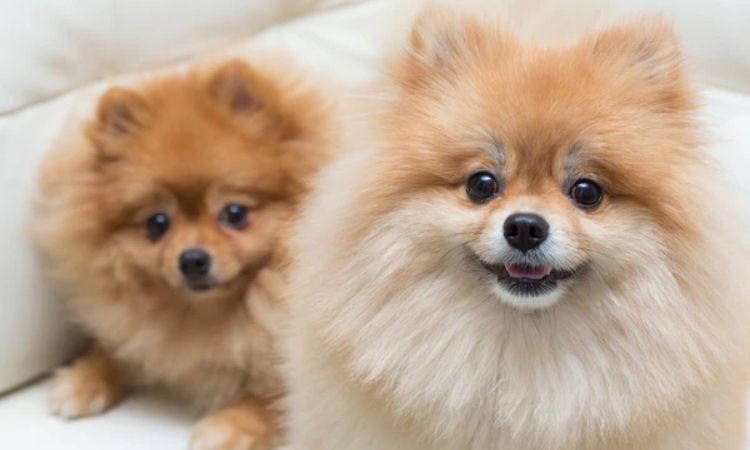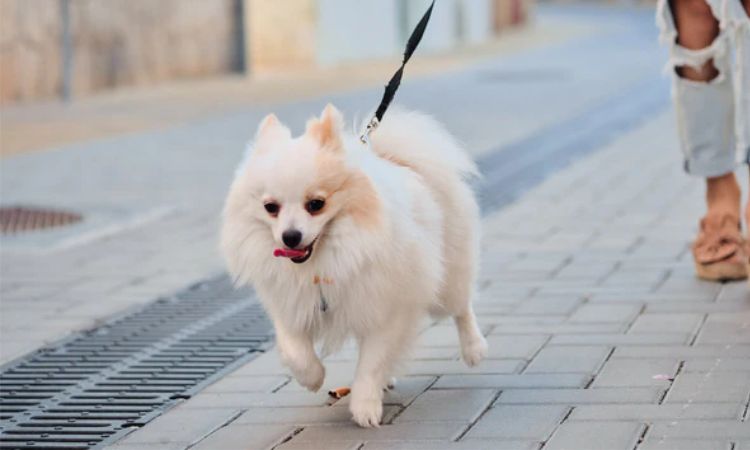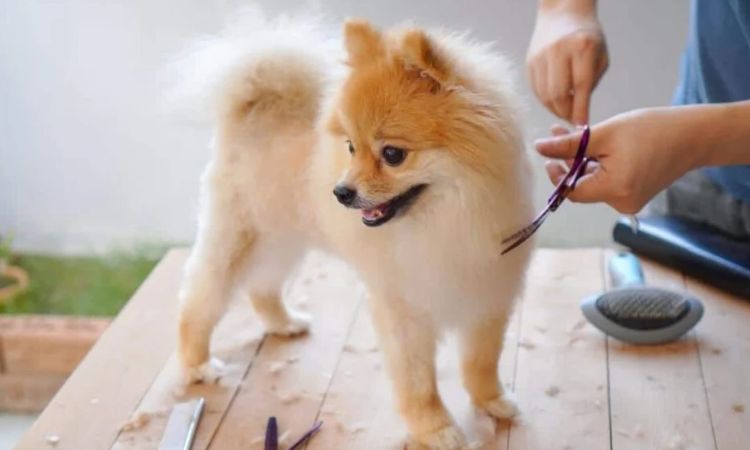Pomeranians may look like cuddly toys with their fluffy coats, but don’t be fooled they shed, and quite a bit. If you’re thinking of bringing one home, it’s important to understand how their shedding works and what you can do to manage it. This guide from Nexus-pets covers everything you need to know to keep that fur under control.

Shedding Patterns in Pomeranians
Pomeranians have unique shedding patterns due to their thick double coat. While light shedding occurs year-round, there are specific periods and stages when the shedding becomes more noticeable:
- Year-round light shedding: A small amount of fur is shed consistently throughout the year, especially with indoor dogs exposed to artificial lighting and temperature.
- Seasonal “blowing coat” periods: Twice a year—typically in spring and fall—Pomeranians shed their undercoat heavily to prepare for changing weather. This is known as “blowing their coat.”
- Puppy coat transition: Between 4 to 12 months of age, Pomeranian puppies shed their soft, fluffy baby coat to make way for their fuller, adult double coat. This phase often surprises new owners with its intensity.
Understanding these phases can help owners prepare for grooming and manage fur around the home effectively.
Causes of Shedding
Shedding in Pomeranians is influenced by a variety of natural and external factors. Understanding the root causes can help owners better manage their dog’s coat and overall health:
- Seasonal changes: The most common cause of shedding is the shift in seasons. As daylight hours and temperatures change—especially during spring and fall—Pomeranians naturally shed their old coat to make way for a new one that’s more suited to the upcoming climate.
- Hormonal and health-related influences: Hormonal changes, such as those related to heat cycles, pregnancy, or thyroid imbalances, can significantly affect shedding patterns. Additionally, underlying health conditions like skin infections or allergies may increase hair loss.
- Environmental and stress factors: Changes in routine, loud environments, new surroundings, or the presence of strangers or other animals can cause stress, leading to temporary or excessive shedding.
A poor-quality or unbalanced diet lacking essential nutrients—particularly omega fatty acids, vitamins, and proteins—can lead to a dull coat and increased hair loss. Ensuring proper nutrition supports healthy skin and reduces unnecessary shedding.

How Much Do Pomeranians Shed?
Pomeranians typically shed at moderate to heavy levels, especially during peak shedding seasons in spring and fall when they “blow” their undercoats to adjust to temperature changes. Compared to other double-coated breeds like Huskies or Labradors, Poms shed less overall due to their smaller size but still produce a noticeable amount of loose fur.
It’s important to remember that shedding can vary significantly between individual Pomeranians—some may shed more heavily or more frequently depending on factors like genetics, health, and environment. Regular grooming helps manage this variability and keeps shedding under control.
Managing Pomeranian Shedding
Consistent grooming is essential to keep Pomeranian shedding under control and maintain a healthy, beautiful coat. Regular brushing helps remove loose hairs before they accumulate around your home and prevents matting, which can lead to skin problems.
The best tools for managing shedding include a slicker brush, which effectively removes loose fur and tangles from the dense outer coat, and an undercoat rake or deshedding tool that reaches deep into the thick undercoat to pull out dead hair. Using these tools properly ensures thorough grooming without damaging your Pom’s delicate coat.
During heavy shedding periods—typically in spring and fall—daily brushing is recommended to manage the increased fur loss. Outside of these peak times, brushing two to three times per week is usually sufficient to keep shedding manageable and the coat healthy.
Bathing your Pomeranian every four to six weeks with a gentle, deshedding shampoo can help loosen dead fur and keep the skin clean. Follow up with a conditioner to maintain softness and reduce tangling. Avoid over-bathing, as it can strip natural oils and worsen shedding.

Additional Tips to Minimize Fur Around the Home
To keep your home free from excess Pomeranian fur and ensure your dog stays comfortable during shedding, consider these practical tips:
- Cleaning Strategies for Loose Hair: Regularly vacuum using a pet-specific vacuum cleaner with strong suction and allergen filters to effectively capture fur from carpets and furniture. Use lint rollers or sticky tape on clothing and upholstery to quickly pick up stray hairs. Frequent sweeping and wiping of surfaces also help reduce loose hair buildup.
- Managing Mats and Tangles Effectively: Prevent mats by brushing your Pom’s coat daily during heavy shedding periods, focusing on areas prone to tangling such as behind the ears, under the legs, and around the tail. Use a slicker brush or detangling comb to gently work through knots. If mats do form, apply a coat conditioner to loosen them and carefully work them out to avoid causing discomfort or damaging the fur.
Ensure your Pomeranian has a clean, cozy resting area free of excess fur and debris. Maintain a moderate indoor temperature to reduce excessive shedding caused by environmental stress. Provide a balanced diet rich in omega-3 and omega-6 fatty acids to support skin and coat health, which can lessen shedding intensity.
If you’re ready to embrace the fluff, a Pomeranian is a wonderful companion. While they do shed, the good news is that with a consistent grooming routine, you can keep their hair and your home—under control. Regular brushing and a little bit of care go a long way in managing that beautiful, fluffy coat.






